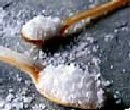Givaudan looks to flavour innovation to boosts sales
through innovation at its Global Flavour Research division.
The company, which reported flavour sales growth of 2.6 per cent in local currencies for the first half of 2006, said in its financial report that the research centre in Cincinnati, US, had made significant progress in the domain of salt and sugar reduction, bitterness suppression, cooling agents and flavour delivery systems.
"Collaborations with leading universities and research partner companies remain an important element of Givaudan's research strategy, mainly in the field of receptor technology," wrote the company in its financial report.
Givaudan said that encouraging steps have been made in the area of salt reduction as part of its Health and Wellness initiative. The health implications of high salt intake are backed up by research from a wide range of sources, and food companies are increasingly looking at ways of reducing salt content in their products.
Numerous scientists are convinced that high salt intake is responsible for increasing blood pressure (hypertension), a major risk factor for cardiovascular disease (CVD) - a disease that causes almost 50 per cent of deaths in Europe.
CVD is reported to cost the EU economy an estimated 169bn ($202bn) per year.
In the field of sweetener enhancement, a number of sweet tasting components have been identified. These components, said the company, could allow for the reduction of sucrose in food and beverages, while maintaining a normal sweetness perception.
In addition, stable cell lines for two bitter receptors have been set up. They have already been used in assays to screen thousands of molecules to find leads that suppress the bitter aftertaste of sweeteners.
Finally, two novel cooling agents have successfully passed the first hurdle in toxicological tests. After regulatory approval, they will create a strong proprietary position in mint applications.
Givaudan's flavours sector currently accounts for 59 per cent of business. But overall growth slowed down significantly in the second quarter of 2006, coming in slightly below market expectations.
This caused the company's shares to slip slightly following the announcement, although the trend is still up for the year-to-date, with shares increasing by about 14 per cent since January.
Nonetheless, the company beat market expectations by announcing a 28 per cent jump in first-half net profits compared to the same period in 2005, to reach CHF215.7m (137.2m) on the back of first half sales that were up 3.7 per cent in local currencies and 7.8 per cent in Swiss Francs, to reach CHF1.47bn.














